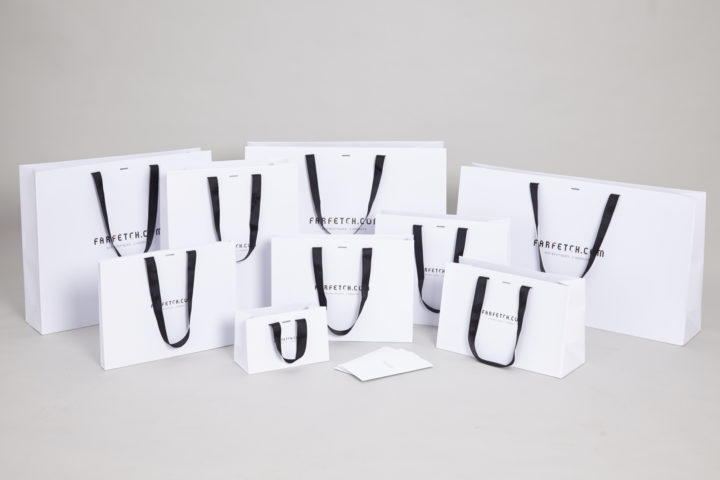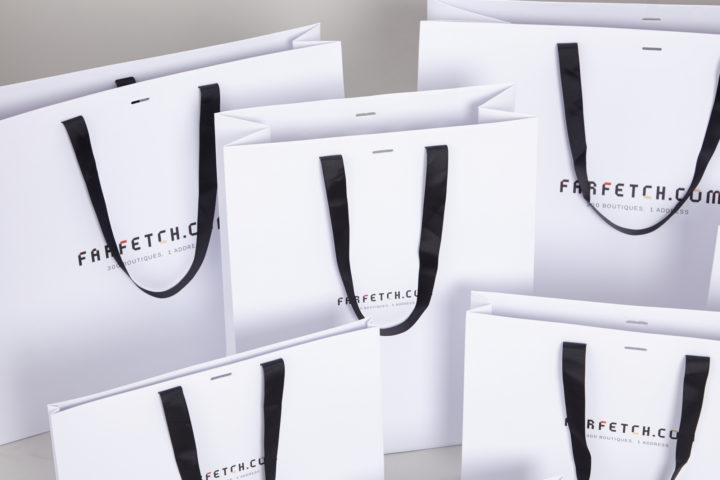Farfetch.com E-commerce Packaging

Even if you take only a passing interest in the multitude of press outlets that regularly cover the ebb and flow of the luxury retail and fashion sectors, you can’t have failed to notice the one topic that proved inescapable as 2015 rolled into 2016. Global consultancy firms have been asked to investigate it; brands have grappled with the implications of its growing importance; editors have been left asking what it all means for their readers and the industry as a whole. It is, of course, the elusive and often intangible notion of ‘digital’.
For all the talk of ‘touchpoints’, ‘omni-‘ or ‘multi-channel’ experiences, the bottom line is that the luxury sector is still finding its way when it comes to translating offline values of exclusivity and refinement into the online arena, whilst also ensuring a brand image painstakingly crafted over many years is sufficiently protected.
And in the void left by traditional retailers, either too slow or too stubborn to make the changes necessary for an entry into the digital space, a new breed of companies has emerged, armed with new models and ways of thinking that have proved game-changing in terms of their integration with the habits of the modern consumer. These so-called ‘pure-play’ enterprises – online-only operations with no roots in bricks-and-mortar retail – have upped the stakes in the race for the ultimate digital experience. The merger of Yoox and Net-A-Porter Group in 2015 brought together two of Europe’s largest e-tailers, in the off-price and luxury channels respectively, in a move designed to take advantage of the best facets of both businesses – namely, distribution and creative output. Lyst, meanwhile, has succeeded in becoming a billion-dollar business through its clever use of web-based editorial to drive consumers to third-party vendors.
Both have, in their own way, changed the face of e-commerce. However, in terms of revolutionising the way we shop by harnessing the power of digital technologies, neither can claim to have had the impact of Farfetch. Founded in 2007 by Portuguese entrepreneur José Neves, the previous owner of B Store and 90s shoe brand SWEAR, Farfetch reaches a compromise between the physical and digital spaces, operating on a commission-based system that allows its partner stores (of all sizes) to sell product through the Farfetch site while retaining their unique visual identity. Unlike traditional retail wholesale models, Farfetch does not buy or hold any stock, instead providing systems that allow for distribution and real-time management of inventory across continents and time zones; more than 300 boutiques are currently represented on the site, with products shipped to more than 170 countries.


But what of Farfetch’s own visual identity? How does an immensely successful online pure-player translate its vision and customer journey into the physical space? This was the question Nirvana were tasked with answering last year, when we were asked to develop and produce a full inventory of e-commerce packaging for Farfetch.
Working closely with Farfetch at every stage of the project from conception through design development and artwork to delivery, we produced a set of nine outer boxes, nine bags and a receipt wallet that would be delivered to their huge network of boutiques before being sent on to paying customers around the world. From tiny, delicate pieces of jewellery to sumptuous, voluminous outerwear, we ensured every base was covered, creating a packaging range that was sensitive to the multitude of different sized products available through the site.
Each of the nine bags was also fitted with black grosgrain ribbon handles and an optional ribbon tie, in a move that mirrors the look and feel of traditional in-store retail packaging. As a response to the growing trend towards away-from-home- deliveries (whether to the workplace or a third-party site), we wanted to make it as easy as possible for customers to transport their product to their final destination, while at once giving Farfetch a more tangible presence in the physical space.
Posted 01 April, 2012 by Jack Cassel-Gerard